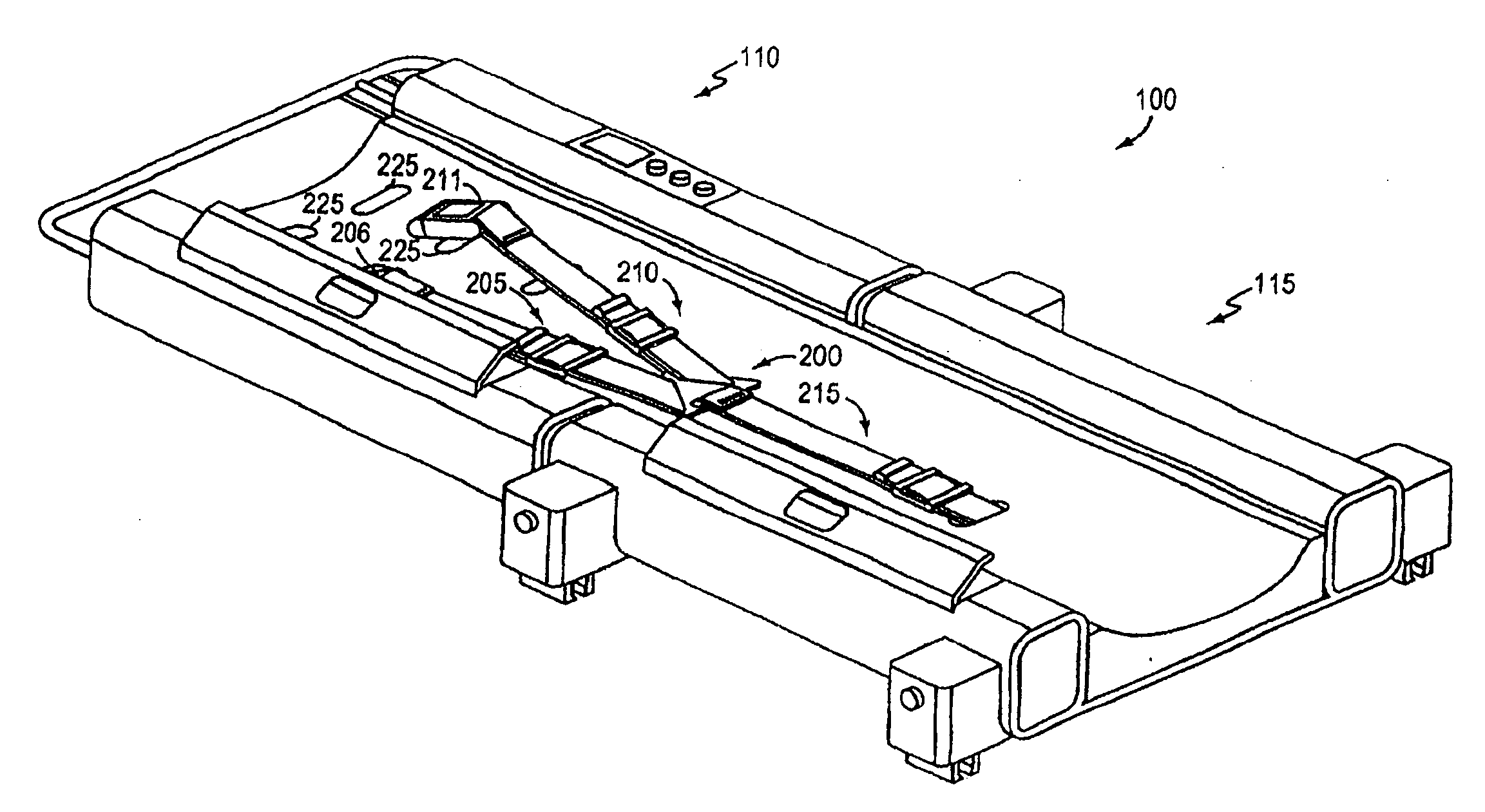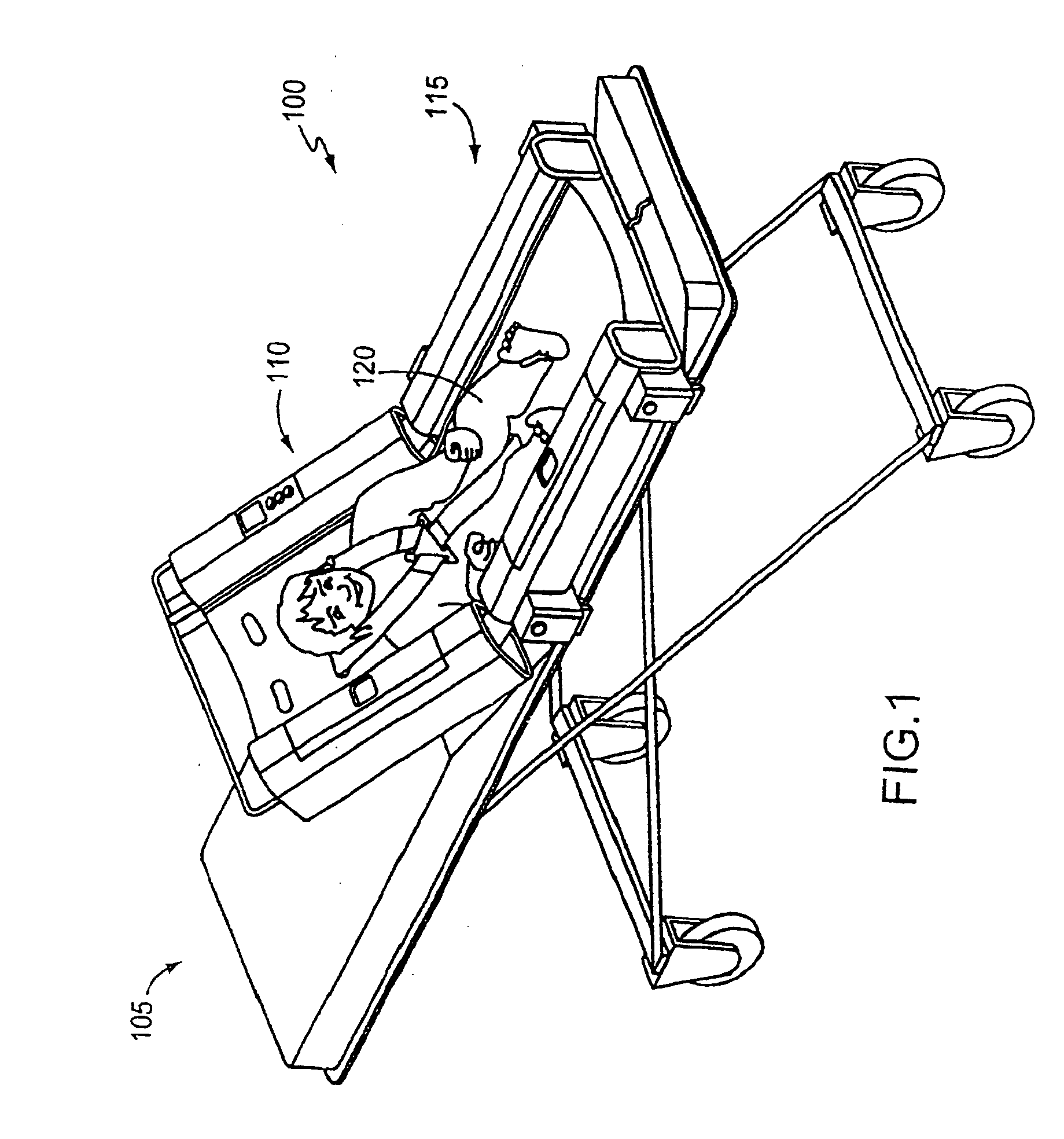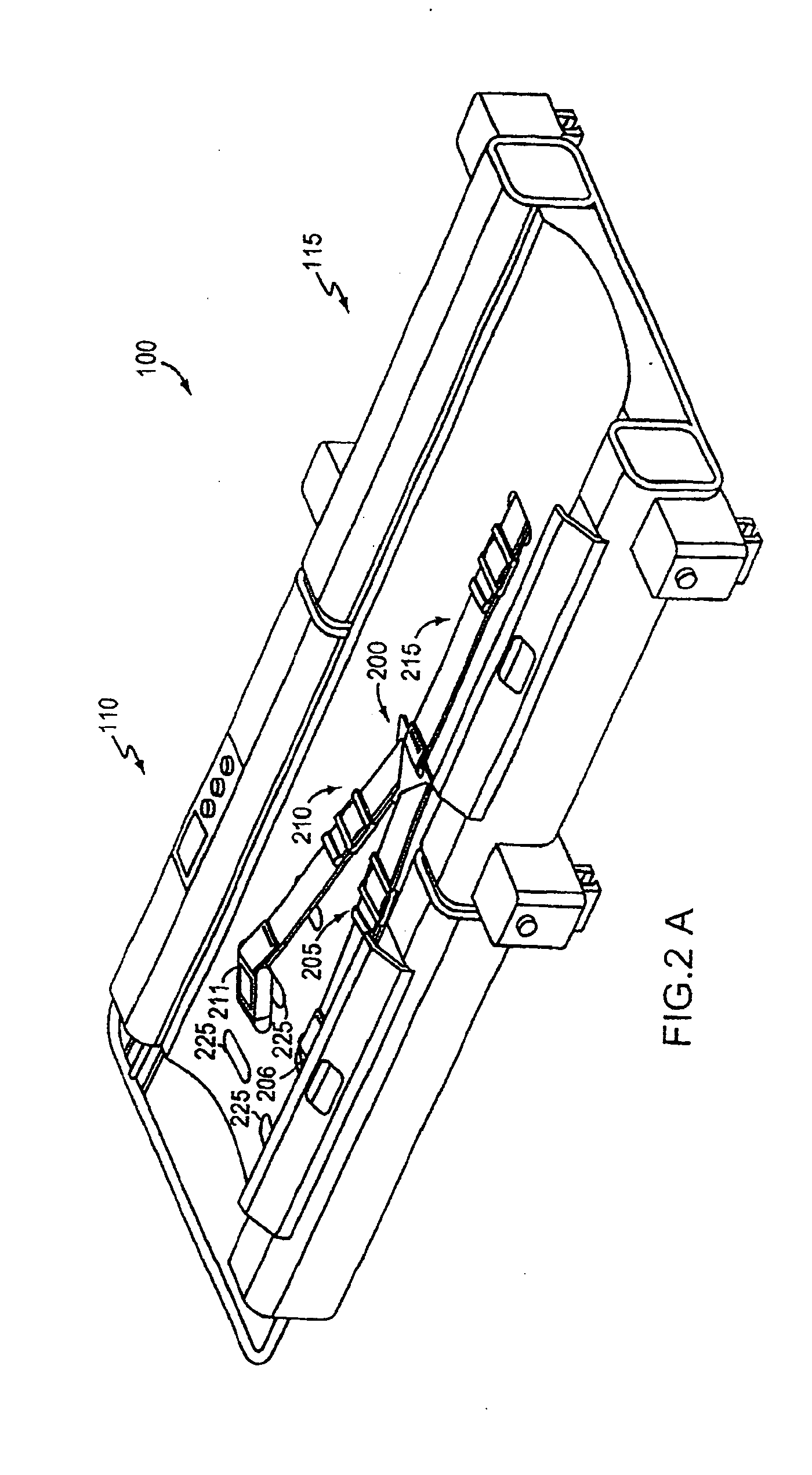Pediatric emergency transport device
a technology for emergency transport and pediatric patients, applied in the direction of contraceptive devices, transportation and packaging, furniture parts, etc., can solve the problems of not being able to safely transport the medical professional's greatest challenge, and the inability to safely carry children on typical or conventional stretchers. to achieve the effect of reducing equipment needed, reducing the need for medical equipment, and evaluating the stability of children
- Summary
- Abstract
- Description
- Claims
- Application Information
AI Technical Summary
Benefits of technology
Problems solved by technology
Method used
Image
Examples
Embodiment Construction
[0073]Illustrative embodiments of the present invention are described below as they might be employed in a device for emergency transport of pediatric patients. In the interest of conciseness, not all features of an actual implementation are described in this specification. It will of course be appreciated that in the development of any actual embodiment, numerous implementation-specific decisions must be made to achieve the developer's specific goals, such as compliance with system-related, business-related, and law-related constraints. Moreover, it will be appreciated that even if such a development effort might be complex and time-consuming, it would nevertheless be a routine undertaking for one of ordinary skill having the benefit of this disclosure.
1. Overview
[0074]The present invention describes a device for emergency transport of pediatric patients that safely and efficiently transports a pediatric patient to a medical facility. The device preferably attaches to a conventiona...
PUM
 Login to View More
Login to View More Abstract
Description
Claims
Application Information
 Login to View More
Login to View More - R&D
- Intellectual Property
- Life Sciences
- Materials
- Tech Scout
- Unparalleled Data Quality
- Higher Quality Content
- 60% Fewer Hallucinations
Browse by: Latest US Patents, China's latest patents, Technical Efficacy Thesaurus, Application Domain, Technology Topic, Popular Technical Reports.
© 2025 PatSnap. All rights reserved.Legal|Privacy policy|Modern Slavery Act Transparency Statement|Sitemap|About US| Contact US: help@patsnap.com



